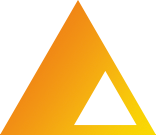‘Pass any flowering bush or tree and you can’t help...
Read More
‘Perhaps it might be said rightly that there are three times: a time present of things past; a time present of things present; and a time present of things future. For these three do exist somewhere in the soul, for otherwise I could not see them’
Book XI, Time and Eternity; St Augustine 5th century AD
***
‘To understand ourselves means to reflect on time. But to understand time we need to reflect on ourselves’.
Carlo Rovelli, The Order of Time
We take it as given that time flows in rhythmic, uniform, universal, formation. Minutes become hours, hours become days, days become weeks. We look to our watches, phones, laptops and public clocks as devices for ordering our days.
The first recorded examples of mechanical clocks are found in the 14th century. In the following, century, measured time was commonly found in structured communities, most often in the form of a village bell. By the 18th century, time as we recognize it had become a fundamental system across Europe. In towns and cities, especially, clocks were now integral in the development of timed industrial activity and integrated transport systems.
Paradoxically, as mechanized time evolved, physicists, mathematicians, philosophers and theologians were questioning its validity. Today, contemporary theoretical physics states that ‘time’ as we understand it – consistent, ordered, objective – does not exist.
So what is this leaky vessel we call time? How do we reconcile its apparent non-existence with the sense of past, present and future that we carry and experience through our everyday lives?
Drawing on the writings of, among others, Carlo Rovelli, theoretical physicist, and St Augustine, theologian/philosopher, visual artist, Sue Morris, contemplates the subjective nature of time and how memory may hold the key.
Sue Morris was born in England and is a graduate of the Royal College of Art, London. Since the early nineties she has lived in Ireland, most recently in Derry, Northern Ireland. Her multidisciplinary practice utilizes drawing, text, printmaking, film, photography, sound and installation. Her work explores notions of the known and unknown particularly around re-imagined and alternative histories.
Selected exhibitions include those at; the Lockhart Gallery, State University New York, USA (2012); the Kunstverein Galerie, Baden bei Wien (2012) and museumORTH, Orth an der Danau, Austria (2013), as part of the International Cultural Programme for Ireland’s Presidency of the EU; Tartu Loomemajanduskeskus, Estonia (2014); Artisterium 7, Tbilisi, Georgia (2014); the State Institute of Culture, Moscow, Russia (2016) the Cultural Centre of Moschato, Athens, Greece (2017) and the 16:9 Gallery, Lawrence University, Michigan, USA (2018).
She has had recent residencies at AIR Krems, Austria (2012); Trükimuuseum, Tartu, Estonia (2013); the Heinrich Böll Residency, Achill Island (2015), and the Art Arcadia residency in St Augustine’s, Derry (2018).
‘Viruses have deep evolutionary roots in the cellular world’ (Morens...
Read MoreHow did I arrive here, contemplating seismic planetary shifts? I...
Read More